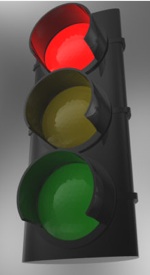Understanding Anger Expression
- Aggressive
- Passive
- Assertive
 Aggressive anger: Anger expressed in this way is directed at the other person to hurt him/her emotionally, physically or psychologically. Yelling, put-downs, and hitting are examples of aggressive anger.
Aggressive anger: Anger expressed in this way is directed at the other person to hurt him/her emotionally, physically or psychologically. Yelling, put-downs, and hitting are examples of aggressive anger.
Passive anger: A person internalizes the expression of anger when he or she avoids dealing with the situation that contributed to feelings of anger. The anger can then be expressed by getting even, holding a grudge, or being mean at some time in the future. Spreading nasty rumors, not speaking to the person, and damaging property can be examples of passive anger.
Assertive anger: This is usually the best way to communicate feelings of anger because anger is expressed directly and in a nonthreatening way to the person involved. A statement such as "I feel angry when you ..." is an example of assertive anger.
The table below outlines some of the various ways different passive, assertive and aggressive styles are expressed, and the effect they may have on others.
PASSIVE |
ASSERTIVE |
AGGRESSIVE |
|
| Characteristics | Allow others to choose for you. Emotionally dishonest. Indirect self-denying, inhibited. In win-lose situations you lose. If you do get your own way, it is indirectly. | Choose for self. Appropriately honest. Direct, self-respecting, self-expressing, straight-forward. Convert win-lose to win-win. | Choose for others. Inappropriately honest (tactless). Direct, self- enhancing. Self-expressive, derogatory. Win-lose situation that you win. |
| Your Own Feelings on the Exchange | Anxious, ignored, helpless, manipulated. Angry at yourself, and/or others. | Confident, self-respecting, goal-oriented, valued. Later: Accomplished. | Righteous, superior,deprecatory, controlling. Later: possibly guilt. |
| Others' Feelings in the Exchange | Guilty or superior. Frustrated with you. | Valued, respected. | Humiliated, defensive, resentful, hurt. |
| Others' View of You in the Exchange | Lack of respect, distrust. Can be considered a pushover. Do not know where you stand. | Respect, trust. Know where you stand. | Vengeful, angry, distrustful, fearful. |
| Outcome | Others achieve their goals at your expense. Your rights are violated. | Outcome determined by above-board negotiation. Your and others' rights respected. | You achieve your goal at others' expense. Your rights upheld; others' are violated. |
| Underlying Belief System | I should never make anyone uncomfortable or displeased... except myself. | I have a responsibility to protect my own rights: I respect others but not necessarily their behaviour. | I have to put others down to protect myself. |
Table from The Arthritis Society (2008) - see their content entitled Develop Effective Communication Skills for more useful materials.
Aggressive
VERBAL
"Shut Up!"; "Get Lost"; "You'll be sorry"
NON-VERBAL
- Finger pointing
- Glaring
- Invasion of personal or even intimate space (4” and closer)
- Arms crossed
- Widening of stance
- Hands on hips
- Fingers clenched into a fist
- Increase in the volume of voice
Passive
VERBAL
“I’m sorry to have to tell you this…”; “Please don’t get angry or upset with me”;
NON-VERBAL
- Biting lips and tongue
- looking away or down
- folded arms
- very soft voice, mouth behind hand
- apologetic tone
Assertive
VERBAL
“I feel”; “I think”; “I am angry about…”; “I would like you to…”; “I don’t
understand”
NON-VERBAL
- direct but non-invasive eye contact
- modulated voice
- respect for spatial boundaries
- use of illustrative gestures
- an erect but relaxed posture
Licensed under the Creative Commons Attribution Non-commercial Share Alike 3.0 License
Brought to you by CReducation.org